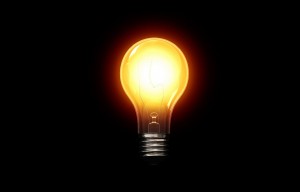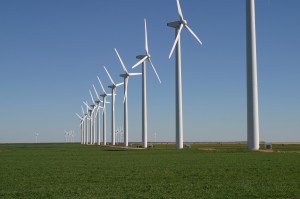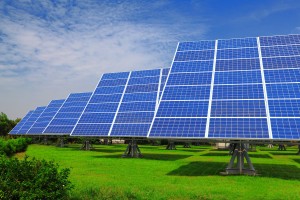How much wood could a woodchuck chuck if a woodchuck could chuck wood? — Old Boy Scout saying.
I’m not here to discuss global warming or climate change or whatever it is called today. Whether I believe in it (I don’t) or not, the real issue is what we are being asked to do about it.
All over the news we read that it is necessary for us to get away from carbon fuels (oil, natural gas, coal), which are “causing” climate change. The problem is of course, these three areas are most of our energy sources. Global warming worriers insist we must begin using alternative “renewable” energy sources and soon, or we’re all doomed. Can this be done? While the warmer worriers would say “of course”, our mission here is to look at these alternative sources and see just how effective they are and how realistic the demands that we rapidly abandon carbon-based fuels. For our purposes, for brevity, and the sake of understanding, we will focus only on electricity in this article. Perhaps we’ll look at other areas in the future, perhaps not. First, a primer:
Where does it come from?
Our electricity comes from a number of sources:
- Coal 39%
- Natural Gas: 27%
- Nuclear energy: 19%
- Hydropower: 7%
- Wind: 4.4%
- Biomass: 1.4%
- Oil: 1%
- Geothermal: .4%
- Solar: .4%
Electricity, a layman’s primer, or What is a watt?
Measurements of energy use can get pretty damned complicated, but our purpose here is to clarify, not complicate. To do this we will focus on one thing: watts. A watt is a measurement of electricity transmitted or consumed. Think of a light bulb:
This is Tom Edison’s good old fashioned incandecent bulb. Forget about those new ones, this one works fine to explain this.
Light bulbs are measured in wattage, as we all know. The higher the watts, the brighter the bulb and the more energy used. Let’s take the common 100 watt bulb as the example. This bulb uses electricity as the rate of 100 watts per hour. If it was turned on for ten hours (10×100) is would used 1000 watts or one kilowatt. A kilowatt is the basic measurement used in calculating our electric bills.
All the electrical appliances in your home use electric by the kilowatt. Some use more than others. That hair dryer you blow dry your hair with can use around 1500 watts or 15 kilowatts in ten hour. A microwave uses around 1000 watts. Your desktop computer uses between 60 and 250 watts per hour.
All these devices, going on and going off through the month add up to a certain number of kilowatt hours that you’ve used. This is how the electic company bills us, the price per kilowatts used. According to the EIA, the U.S. Energy Information Administration, the average home in the U.S. uses about 10968 kilowatts per year, or about 909 kilowatts per month. This is an important number, and we’ll be seeing it again.
If we’re all using an average of 909 kilowatts per month, that’s roughly 30 kilowatts a day. So if I use 30, and you use 30, we are using 60 kilowatts between us. If there are ten houses on our block, we are collectively using about 300 kilowatts per day.
We depend on the electric company to provide us with those kilowatts, and they do, mostly by burning coal or natural gas. We also get electricity from nuclear power, but we’ll discuss that later. These carbon fuels are burned in great qualities to light our bulbs, but there is a pretty sufficient supply of these materials, expecially coal. But remember, these are the bad guys and must go. So if we stop using them, what on earth will be use? Enter alternative “renewable” energy:
The Wind Turbine
There they are, the wind turbines. We’ve all seen the photos, and maybe you’ve seen them in person. These suckers are big, really big. A common 1.5 megawatt turbine built by General Electric consists of 116-ft blades atop a 212-ft tower for a total height of 328 feet. That’s an office building 32 floors high. Pretty damn big.
Windmills and turbines have been around for centuries. Commercial wind turbines operate by using kinetic (wind) energy to turn a propellor which is connected by a shaft to a generator which produces electricity. A simple process on a small scale. On a large scale, however, something else entirely. As I said, these puppies are big, and the average cost to install one commercial wind turbine is about three to four million dollars! That does not include the cost of the land it sits on. These turbines require a lot of room to work effectively. Operating and maintainence costs can run as much as a quarter of a million dollars per year.
Okay, so that’s how they work. In a nutshell, they generate electricity when the wind is blowing (more about that later). So how much electricity does one of these turbines generate? A typical turbine today can generate about 2.5 megawatts of electricity. A megawatt is a thousand kilowatts, so think of it as 2500 kilowatts.
So here’s where it gets interesting. The companies that promote these things will tell you this can power about 400 homes or even more. But let’s do some math:
Remember our individual homes? Thirty kilowatts a day? If a turbine generates 2500 kilowatts, how many homes can it supply? We divide 2500 by 30, and we get the answer: 83. That monster turbine, can provide power to about 83 homes when the wind is blowing. If the wind stops, the propeller stops, the generator stops, the power stops flowing. No more electric. Nothing, none, nada. There is a rating for these turbines known as the capability factor. In essence, this means how often it is actually producing electricity. Overall the average in the industry appears to be 40%, meaning the electricity is actually flowing from it forty percent of the time. Critics, however, suggest that the real percentage is more like 25 percent.
Now this doesn’t seem sensible, but the way they are used is as supplemental energy. When they stop generating, the electric company switches over to more reliable fuels — carbon fuels.
One last point and we’ll move on. Let’s assume we have a 2.5 megawatt turbine and it’s totally effective. It would power about 83 homes. So how many wind turbines would it take to power a small (population 10,000) town? Hmmmmm….120 turbines! And remember, that’s just homes, not store, offices or factories which require lots more electricity.
How about a larger city? Well let’s see; South Bend, Indiana, households, 101,190 = 1219 turbines. Madison, Wisconsin, 245,691 households = 2960 tubines. How about a large city, say Chicago? 2,722,389 households = 32,800 wind turbines.
Okay, so that’s a bit of overkill, but the point is this: Wind power is nice, it’s relatively clean, and it’s renewable. But commerial wind turbines are expensive to build, take up lots and lots of space, and other than as an auxillery power source, are not practical. Time to move on.
Solar Energy
The process of converting the sun’s rays into electricity is called photovoltaics. Suffice it to be said, the physics of the whole process confuses me, but we don’t need to know more than this: The sun shines down on panels of solar cells that use that heat and light to create electricity. I think we’ve all at least seen pictures of solar panels and have an idea of how it works.
So what is a “typical” solar panel, and how much electricity does it make? Residential and commercial panels differ somewhat in size. although not considerably. On average, the typical panel is about six feet long and 3 feet wide (6’x3′ – eighteen square feet), holds about 60-70 solar cells and weighs between 40 and 50 lbs. Again, on average, this one solar panel can generate 200-300 watts of electricity when the sun is shining on it. That two or three 100 watt lightbulbs. For our purposes, we’ll say a typcial panel is 250 watts.
Remember our house from the previous section? Thirty (30) kilowatts per day. If we take that number, 30,000 watts and divide it by 250, we get 120 panels to power our home. At eighteen square feet per panel, that’s 2160 square feet of solar panels. Not huge, but not small either. But….it only works when the sun is shining. Interestingly, “usable” sunlight is much less than you might think. It can be as low as three hours a day in some parts of the country. The maximum, in places like Arizona, is only seven hours per day.
So how much does in cost? Well…..that gets tricky. There are tons of “deals” and “subsidies” out there as incentives to get those panels up on your house. It can be as high a 7-9 dollars per watt! Keep in mind, it’s not just a matter of slapping the panels on your roof. The system also requires batteries to store the power, a controller to regulate the power in the batteries, and an inverter to covert the battery power into usable electricity.
But let’s suppose solar prices are going down, and you can get a deal for five dollars per watt. That’s $500 to light one lightbulb. It comes down to about $1250 installation costs per panel (250 watts). So if you could fit 50 panels on your roof (900 square feet), you would generate about 12500 watts (12.5 kilowatts) for a cost of $62,500. Before some reader goes ballistic and says “It doesn’t cost that much!”, let me repeat that there are many different kinds of subsidies to lower the cost to the consumer. Without dragging this out any further, do this: Calculate your kilowatt costs from your electric bill. Determine the return in kilowatts from solar panels, and see if it works for you. My guess is you’ll find it takes a considerable number of years to break even.
Remember the 30 kilowatts per house per day? Let’s try that with solar panels. Suppose we had a large solar panel the size of a football field, including the endzones. That area is 160 x 360 feet, or 57,600 square feet, a pretty big area. Using our 18 square foot panels, that works out to 3200 panels, each generating at the maximum 300 watts. That makes a total of 960 kilowatts from the football field grid, or enough wattage for 32 homes. Yup, 32 homes when the sun is shining. The amount of space needed to power even a small amount of homes, part of the time is larger than large, it is huge.
Bottom line so far: Two very popular alternative energy methods are in fact not very practical at all. It seems to me that there is a fair amount of deception going on with alternative energy. An energy source is only worth discussing if it has a potential to replace what exists. After a brief look, we see these two sources do not.
Coming up next: Hydroelectric and biomass.
Sources:
U.S. Energy Information Administration


